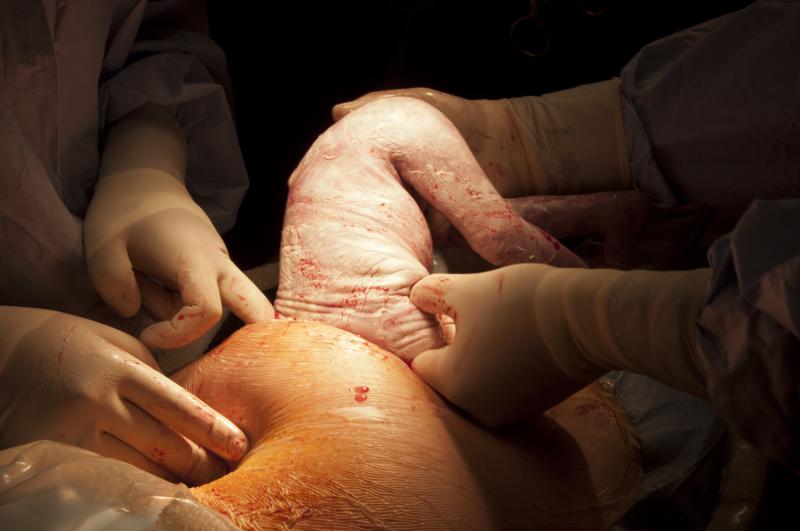Junior residents need more exposure to manage obstetric airway




 Obstetricians and midwives are also affected by traumatic deliveries with negative outcomes.
Obstetricians and midwives are also affected by traumatic deliveries with negative outcomes.The local incidence of difficult intubation of patients delivering by caesarean section under general anaesthesia at a high-volume obstetric hospital in Singapore is 33 in 660 (1:20 or 5.0 percent), reports a recent study. No case of failed intubation has been recorded.
“The true incidence of difficult intubation was likely to be lower, as 90.1 percent of intubations were performed by junior residents,” the researchers said. “As the frequency of obstetric general anaesthesia is declining, there is a need to provide residents with every opportunity possible to manage the obstetric airway under appropriate supervision.”
All parturient women (mean age, 32.1±5.5 years; median body mass index, 27.5 kg/m2, interquartile range, 24.6–31.1) who underwent caesarean delivery under general anaesthesia in 2013–2016 were identified. The researchers reviewed medical records to extract relevant data.
Difficult intubation was characterized by the need for more than one attempt at intubation, or documented as such, based on the opinion of the anaesthetist. A failed intubation, on the other hand, was defined as the inability to intubate the trachea, with subsequent abandonment of the procedure as a means of airway management.
In total, 660 records of caesarean section under general anaesthesia were extracted. All women went through rapid sequence induction with cricoid pressure: 91.2 percent received thiopentone and 98.1 percent succinylcholine. [Singapore Med J 2020;doi:10.11622/smedj.2020118]
Of the 660 patients, only 33 (5.0 percent) experienced difficult intubations. Junior trainees carried out 90 percent of all intubations and 28 of 33 (84.8 percent) difficult intubations. Senior residents/fellows (57.1 percent) and consultants (15.0 percent) performed repeat intubations. There was no incidence of failed intubation reported.
“The lowered frequency of employing general anaesthesia for caesarean deliveries is a matter of concern, as it could compromise obstetric airway training,” the researchers said, noting how a mandatory decrease in work hours resulted in anaesthesia trainees being part of only one caesarean section performed under general anaesthesia per year at a university hospital in the UK. [Anaesthesia 2000;55:179-183; Int J Obstet Anesth 2005;14:2-4; Int J Obstet Anesth 2008;17:233-237]
“With fewer training opportunities, trainees may not achieve the required expertise by the time they graduate, and this could impact the quality of obstetric care rendered,” they noted.
Previous studies have also emphasized the association between the decline in caesarean general anaesthesia exposure and an increase in failed intubations. For instance, when obstetric general anaesthesia decreased from 83 percent in 1981 to 23 percent in 1994, failed intubations increased from 1:300 to 1:250 during the same period. [Br J Anaesth 1996;76:680-684; Br J Anaesth 2005;94:690]
In contrast, centres with a more liberal approach to general anaesthesia had a much lower incidence of difficult or failed intubations. [Anaesthesia 2009;64:1168-1171; Anesthesiology 1992;77:67-73]
“While such observations are, at best, associations, it does highlight the importance of giving trainees every learning opportunity to manage the obstetric airway,” the researchers said. [Int J Obstet Anesth 2007;16:1-3; Int J Obstet Anesth 2008;17:233-237]
“The faculty at our institution probably subscribed to this philosophy, as 90.1 percent of all tracheal intubations and 28 of 33 difficult intubations were performed by residents,” they added.